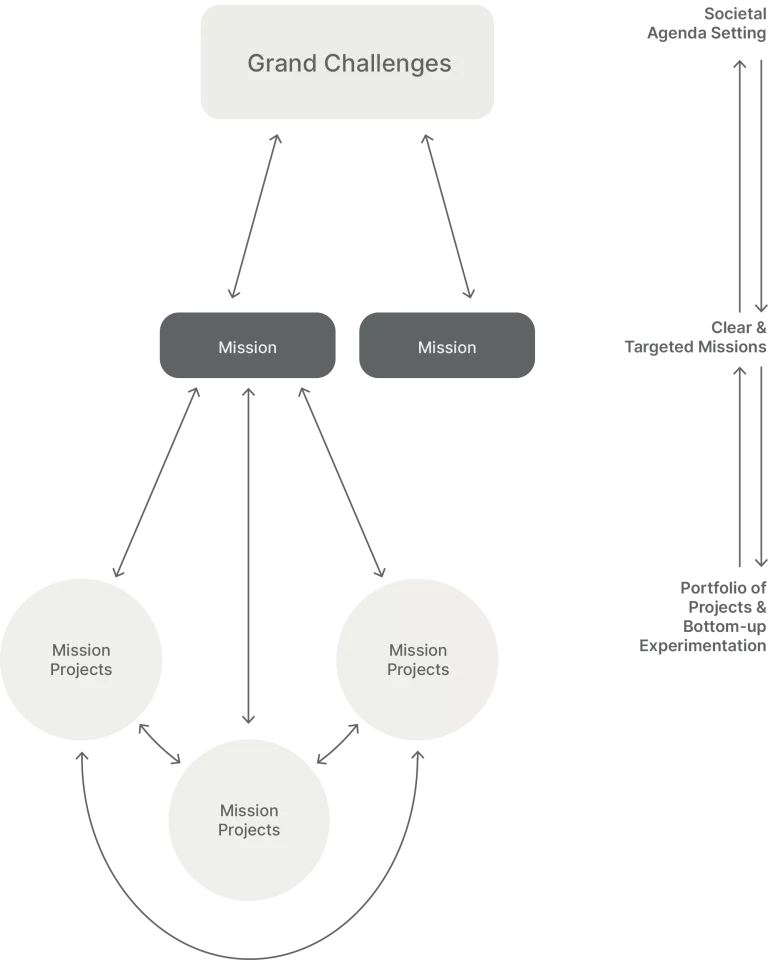Grand Challenges & Mission-oriented Innovation
In addition to accepting that the SDGs must be reframed as wicked problems (acknowledging their nested complexity and moving beyond high-level abstractions), there also exists a need to further frame these problems in a strategically actionable way. This is why UL is adopting a ‘mission-oriented’ approach to innovation.
A high-level societal goal (e.g. SDG 15 “Life On Land”) becomes more tangible when reframed as a specific wicked problem (e.g. ‘Biodiversity Collapse’). However, while more distinct, it remains void of outcome-based thinking. Mission-oriented innovation is an approach to tackling the SDGs that puts outcome-based thinking at its core; it leverages the power of societal missions as a coordination strategy to catalyse transformative collective action. On the surface, it is a deceptively simple framework that proposes reframing the SDGs as ‘societal grand challenges’ (understood as wicked problems) so that we might then declare missions in service of those grand challenges.
An innovation can be considered ‘mission-oriented’ when there is a clear outcome or overarching objective the innovation aims to achieve. It must have clear strategic direction, even if the specifics of how it will manifest remain uncertain. Implicit in the model is the acceptance that cross-sectoral and cross- disciplinary action must be coordinated through a portfolio of mission projects.
A renowned example of adopting a mission- oriented approach to innovation was the 1969 Moon Landing. With its bold yet clear objective, there was a top-down shaping force that guided the relevant ecosystem of collaborators as they worked together to drive new learning and knowledge to achieve the overarching goal. This particular example was a ‘complicated’ challenge driven by geopolitical and technological problems. The SDGs are ‘complex’ challenges and require a socio ecological, socio- technical and socio-economic impetus.
Importantly, the clarity provided by as top-down objective assists in gaining commitment from the stakeholders needed to achieve our missions; the clarity of a well-framed mission and related research and innovation projects bring confidence to what could otherwise be a broad and ill-defined collaboration.

Diagram Reference: Mazzucato, M. (2018)